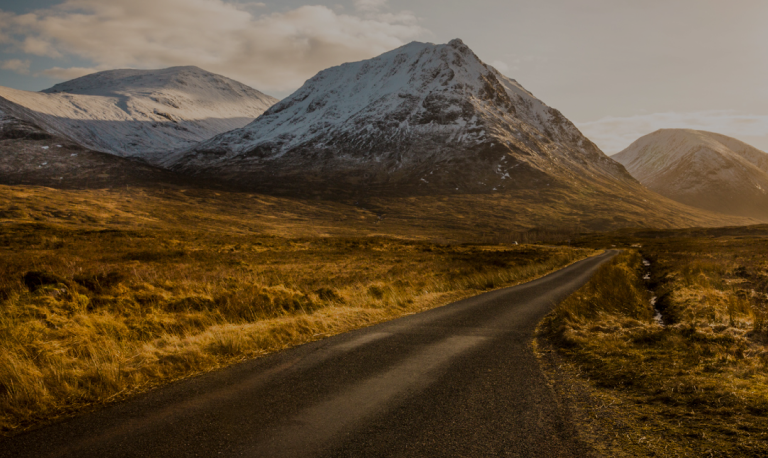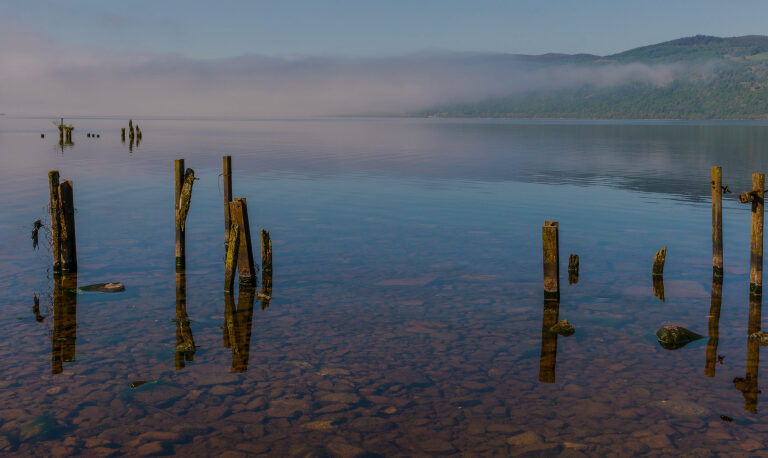A Whisky Tour of Islay: The Complete Guide
Located off the west coast of Scotland, the island of Islay, part of the Inner Hebrides archipelago, is the perfect destination for a whisky tour.
The island is roughly 40 kilometres long and 32 kilometres wide, with a population of around 3,000 people. Unlike its neighbouring mountainous islands, such as Jura, Mull or Skye, Islay is a lovely flat island, better known for its expansive beaches, birdwatching opportunities, and of course, its historic whisky production.
After all, Islay is most famous for its peated single-malt Scotch whiskies! The term ‘peated’ refers to the smoky flavour that is so characteristic in the whisky that stems from Islay. The fiery aroma and flavour are produced by compounds which are released by the peat fires used to dry malted barley. The unique character of Islay whisky stems from the island’s exposed location, as it faces the full force of oceanic weather. This harsh environment shapes the island’s peat, which in turn influences the whisky. The result is a distinctively salty, maritime, and medicinal flavour profile that sets Islay malt whiskies apart from other mainland malts.
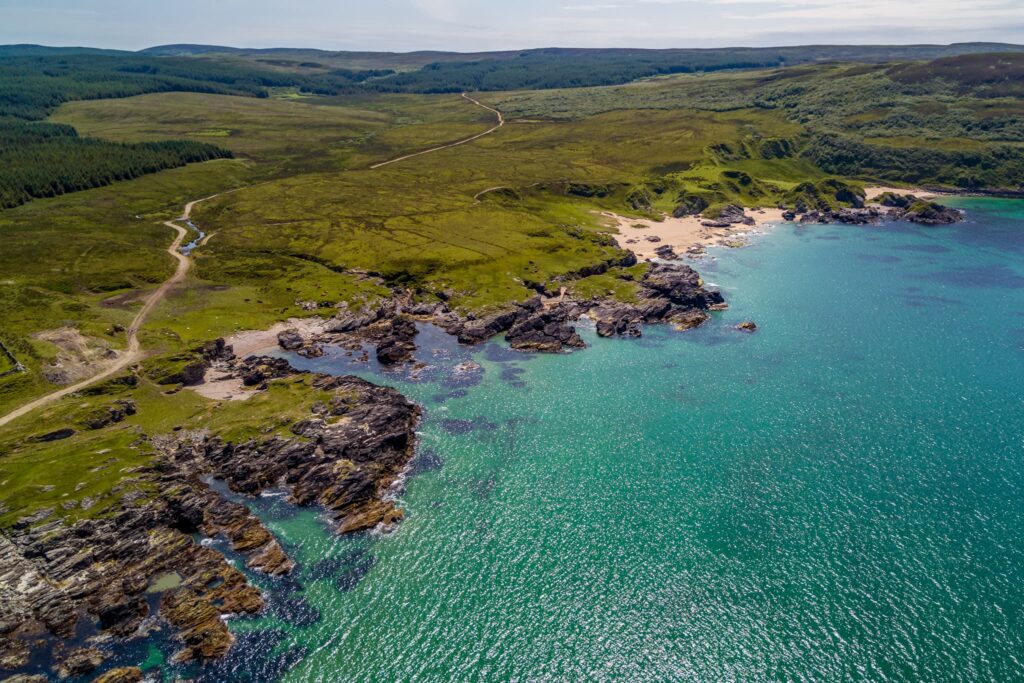
But, what exactly is peat?
Good question! Historically, peat was widely used as a fuel source in Scotland and Ireland, particularly in areas where wood was scarce. It is a type of soil composed of partially decayed vegetation, such as moss and shrubs. It forms in wetland conditions over thousands of years as plant material is prevented from fully decaying due to acidic and anaerobic conditions. Being a rather wet and boggy island, Islay is the ideal spot for peat formation. Peatlands are important ecosystems that not only absorb carbon dioxide, but also support the unique biodiversity that Islay is also known for.
In whisky-making, peat is burned to dry malted barley. The smoke from this process imparts the characteristic smoky, earthy flavours to Islay whiskies. The length and intensity of exposure to the peat smoke dictates the strength of this flavour as do the characteristics of the peat itself. The peat on Islay is special in part due to its composition, which includes marine vegetation. The island has a mild climate influenced by the Gulf Stream, which also allows for unique flora to grow, which contributes to the character of its whisky.
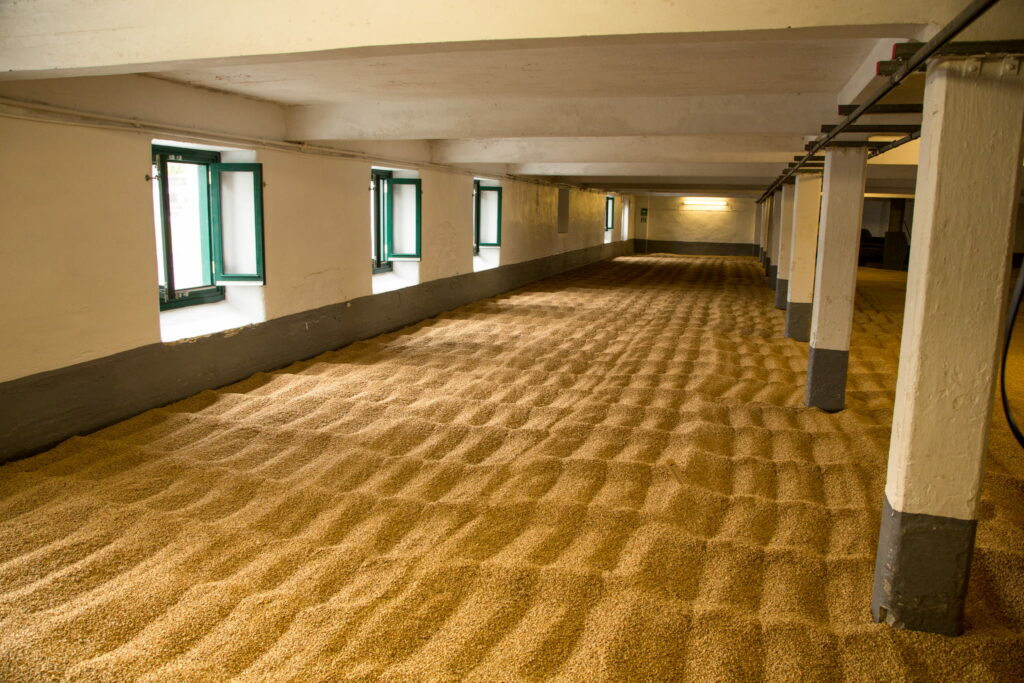
How many whisky distilleries are there in Islay?
Islay has a rich whisky history. As of 2024, it is home to nine active distilleries, including some really well-known names worldwide. Each produces a unique malt, typically featuring notes of peat and sea salt.
Bowmore is the oldest distillery on Islay, dating back to 1779, and it produces a balanced, medium-peated whisky. It is located in the capital of the island, which shares its name.
The southern three, Ardbeg, Lagavulin and Laphroaig, were all founded around 1815, and are known for their intense heavily peated whiskies, some with medicinal and smoky notes. They sit in a lovely spot on the island.
Caol Ila and Bunnahabhain are located on the east coast of Islay, overlooking the Isle of Jura. They were established in 1846 and 1881, respectively. Caol Ila produces lighter, smoky whisky often used in blends. Bunnahabhain is one of the milder Islay malts, often unpeated or lightly peated. Nearby Ardnahoe is the newest distillery on Islay, which only began production in 2018, and aims to create a classic peated Islay malt.
On the west coast, Bruichladdich reopened in 2001 after being closed since 1994. It’s known for both unpeated and heavily peated whiskies, as well as its commitment to traditional methods. And last but not least, Kilchoman is the second newest distillery in Islay, founded in 2005. It is a rather unique family-run farm distillery, and it grows some of its own barley on-site.
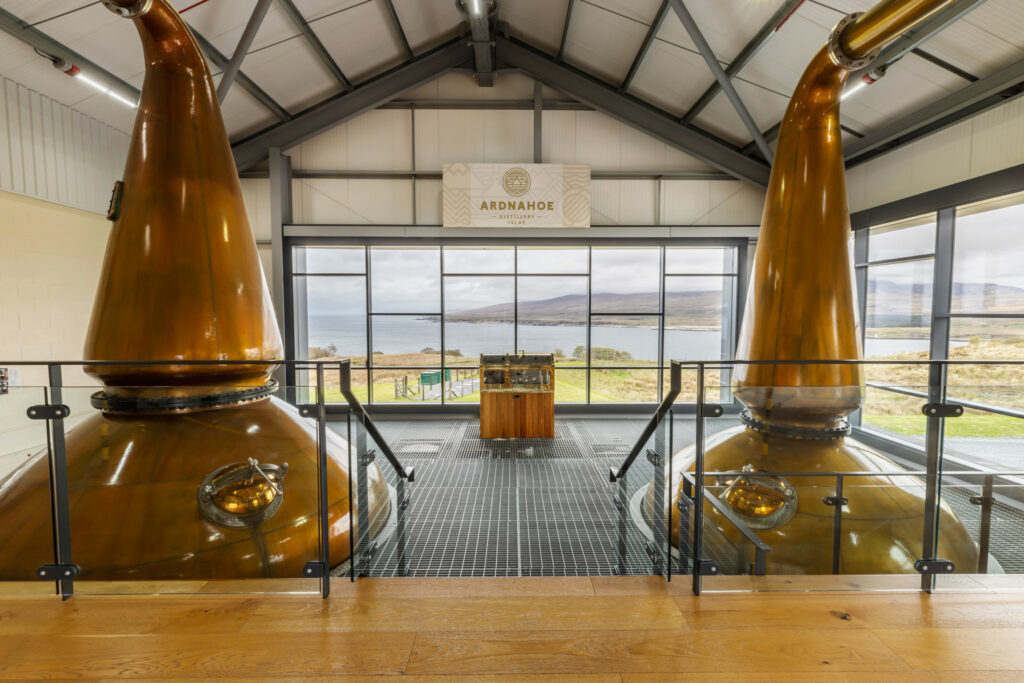
What whisky tours are available?
There is a wide variety of whisky tours in Islay, with plenty of opportunities to become immersed in the island’s rich distilling heritage. Each distillery offers a range of tours, tastings and exclusive experiences, ranging from basic visits to visitor centres to more in-depth tutoring. Distillery tours typically include a guided tour of the facility and a tasting session. Some distilleries also offer premium tours with more extensive tastings or behind-the-scenes access.
One of our favourite Islay whisky distillery tours includes the Bowmore classic tour, which is unique as it allows visitors to experience every part of the production process, from malting to casking. The Quintessential Ardbeg tour is also a good way to taste some of the punchier Islay malts, in an informal and interactive walk-around. Ardnahoe is also worth a visit, enjoying a spectacular location overlooking the sound of Islay and Jura right across, with its imposing Paps visible from the distilling room.
For those hardcore connoisseurs, there is also the Islay Whisky Academy, which offers extensive whisky educational programmes and courses, ranging from day-long introductions to week-long immersive experiences.
When planning a distillery-hopping tour in Islay, we always recommend booking tours in advance, even in low season, and essentially, during Fèis Ìle. Also, consider designating a driver or using local taxi services if you plan to participate in tastings. Remember that the drink-drive limit in Scotland is stricter than in the rest of the UK, and a wee dram could take you well over the limit!
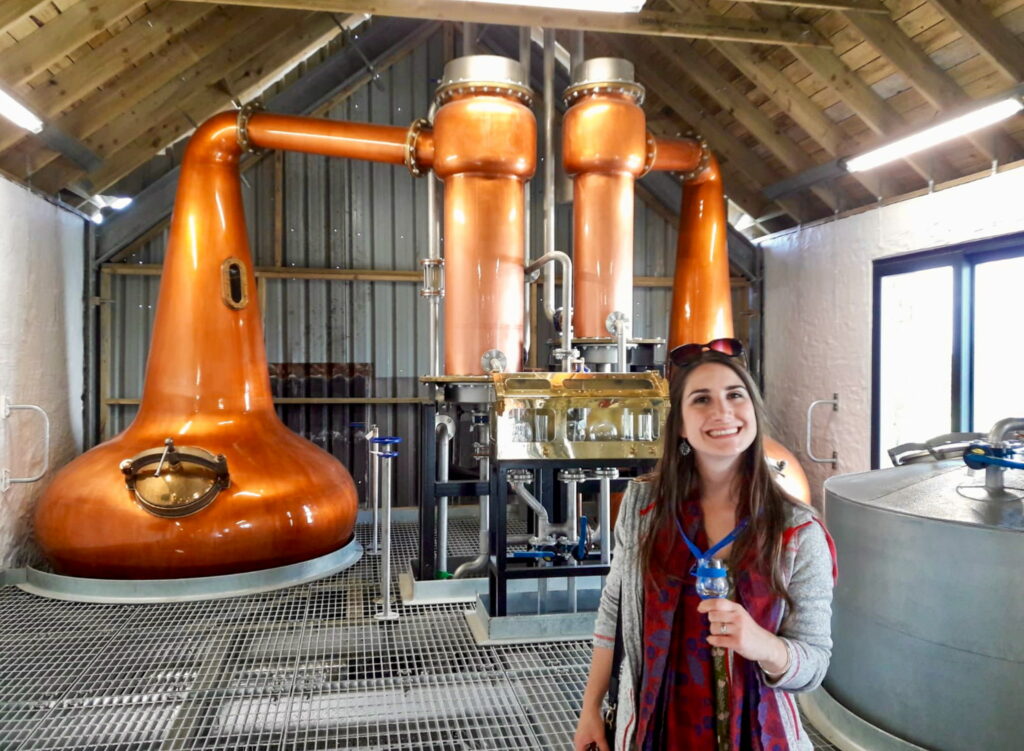
What is Fèis Ìle?
Fèis Ìle is Islay’s annual whisky festival held in late May/early June. It is an incredibly popular music and malt festival, offering a unique opportunity to experience Islay’s whisky, culture, and community. It usually lasts just over a week, and while whisky is a major component, the festival also celebrates Islay’s culture as a whole, including music, dance, and Gaelic language.
Each of Islay’s distilleries hosts an open day during the festival, offering special tours, tastings, and often releasing limited edition whiskies. There are also folk music sessions, ceilidhs (traditional Gaelic social gatherings), and all sorts of cultural events throughout the week. The local community actively participates, hosting various events and showcasing local crafts and produce.
The festival attracts thousands of visitors from around the world, and as accommodation and ferry sailings to the island are already limited, it is essential to book up to 12 months in advance. We do work with some special providers, such as Glenegedale House and Kilmeny Country House, whose passionate hosts always offer a warm Islay welcome. They are popular though, so booking well in advance is imperative.
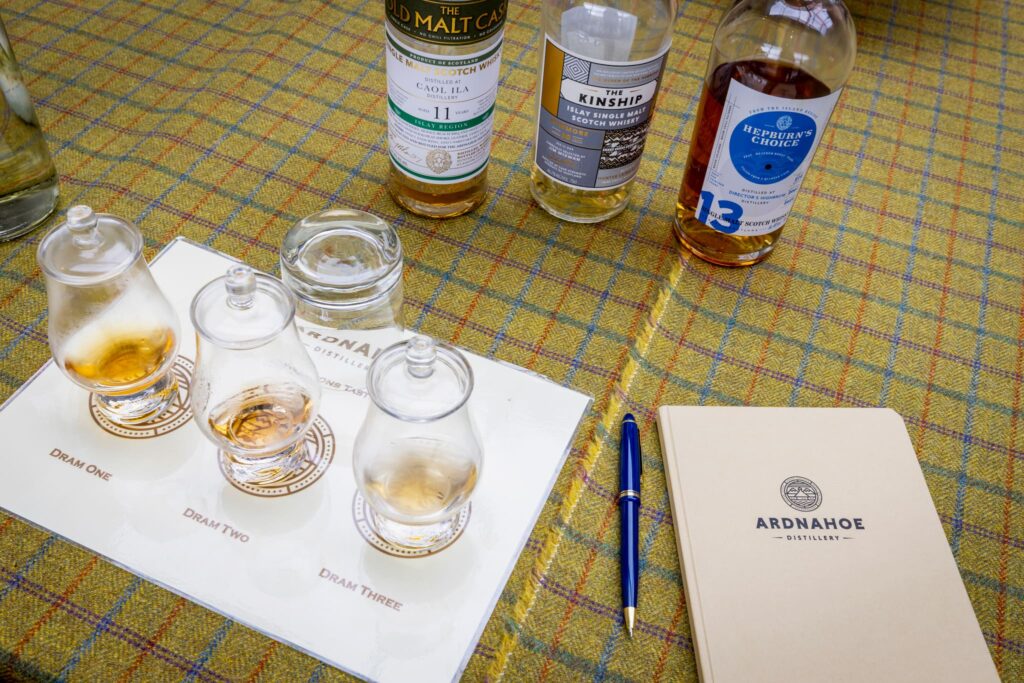
Can you walk between the distilleries?
Near Port Ellen on the south coast of the island, three of Islay’s most renowned whisky distilleries lie within walking distance from each other, namely Laphroaig, Lagavulin and Ardbeg. The Three Distilleries Pathway runs for 5.5km and links all three of them. This is a great way to fully explore these distilleries, without needing to worry about driving! From Ardbeg, the final distillery along the pathway, you can catch the bus back to Port Ellen.
Originating back to the 19th century, these distilleries have upheld their craft, producing some of the world’s most distinctive whiskies cherished by enthusiasts globally. Exploring these historic sites not only offers a a tasting journey but also a glimpse into the rich cultural heritage of Islay’s whisky production. The single malts produced here are celebrated for their peaty, smoky, and complex flavours, each offering a unique profile that mirrors the island’s rugged terrain and centuries-old whisky-making tradition. Walking between the three of them is a great way to immerse yourself in Islay’s whisky history while also enjoying the beautiful scenery that the southern coastline offers.
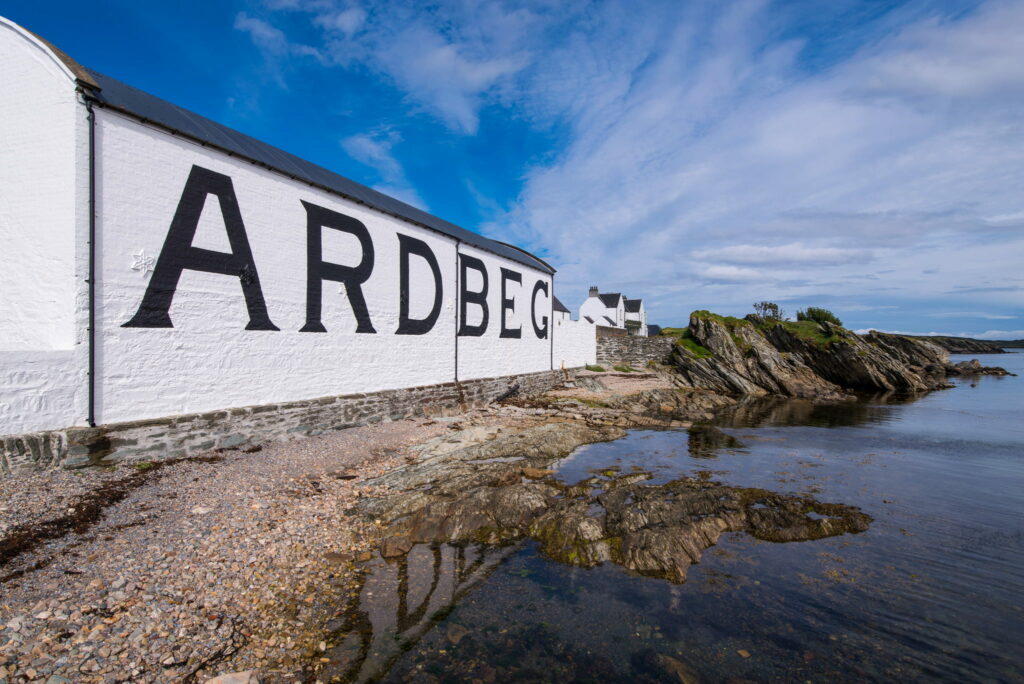
What else is there to do, beyond whisky?
There are plenty of other ways to explore Islay. It is a popular spot for birdwatchers and nature enthusiasts, and the RSPB Loch Gruinart Reserve is ideal for spotting rare birds. On the south, the Mull of Oa offers dramatic coastal walks boarded by impressive sea cliffs. You might even spot an otter or two!
History fans might enjoy a visit to the Museum of Islay Life in Port Charlotte, which showcases artefacts from the Mesolithic period to the present day, or the Finlaggan Trust’s visitor centre, the historic seat of the Lords of the Isles. The Kildalton Cross is another unique ancient landmark, a sculptural masterpiece and one of the finest carved stones of medieval Scotland.
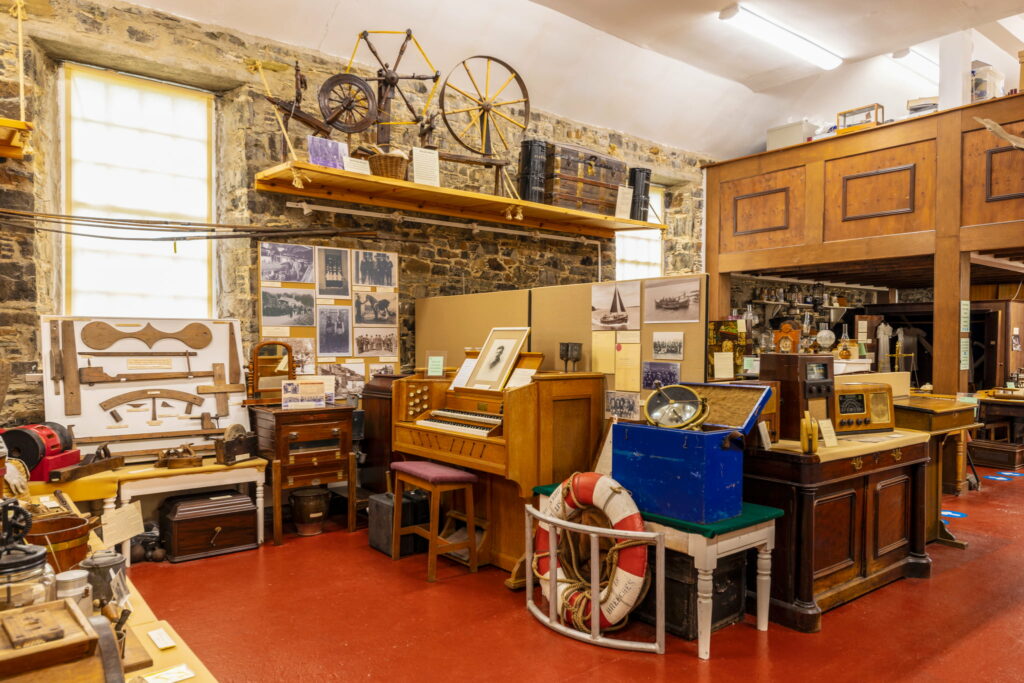
If you need a day off from whisky tasting, Islay’s pristine white-sand beaches, such as Machir Bay and Saligo Bay, are ideal for a picnic and photography. Or potter about in the picturesque village of Portnahaven and pretty Bowmore, with its white stone buildings. The island also has a vibrant local arts and crafts scene, with galleries and craft shops like Islay Quilters and the Blue Letterbox Gallery selling lovely handmade gifts.
You could also pop along to Jura, one of the wildest islands in the Inner Hebrides. Named after the Norse word for ‘Island of Deer,’ Jura is also famous for its single malt whisky. The island’s landscape is dominated by the Paps of Jura, three dramatic hills on its western coast. We would recommend booking a boat trip with Jura Boat Tours, where Jura local, Bob Henry, can pick you up from Port Aksaig in Islay and take you around Jura.
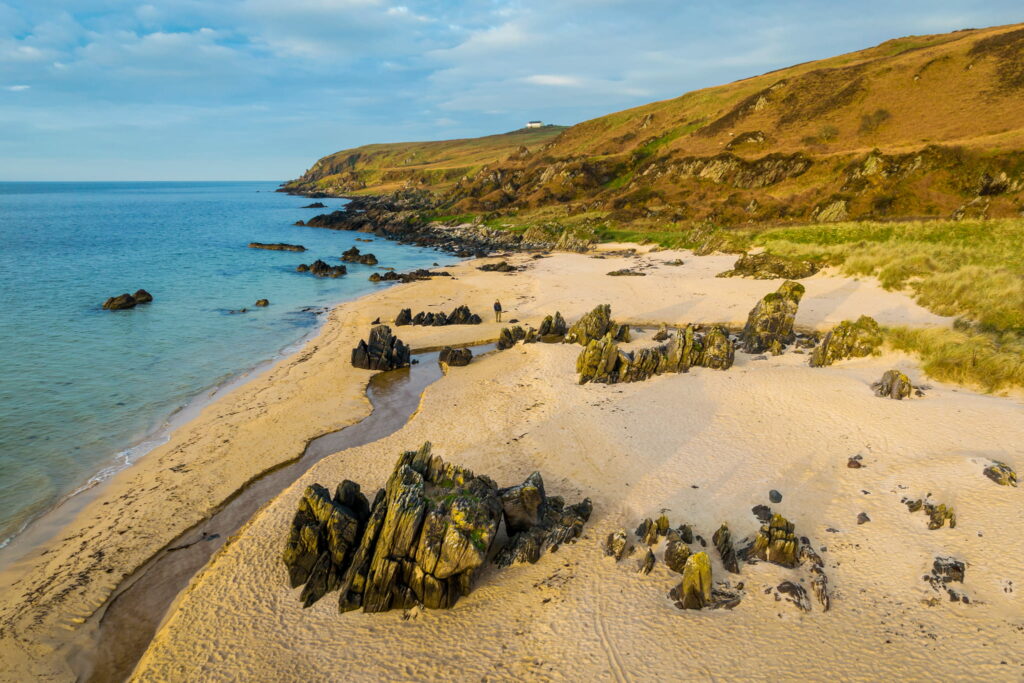
Sounds great! How do I get there?
To travel to Islay we recommend collecting a hire car at Glasgow Airport and making the 2-hour journey north to the ferry port of Kennacraig. Located off the west coast of Scotland, it takes about 2.5 hours to reach Islay from here. Calmac operates regular ferries to the island, with services arriving at either Port Ellen in the south or Port Askaig on the east coast.
The island itself is easy to explore with its network of scenic roads and compact size – approximately 25 miles long and 15 miles wide – but do take care when driving on single-track roads and make use of the passing places.
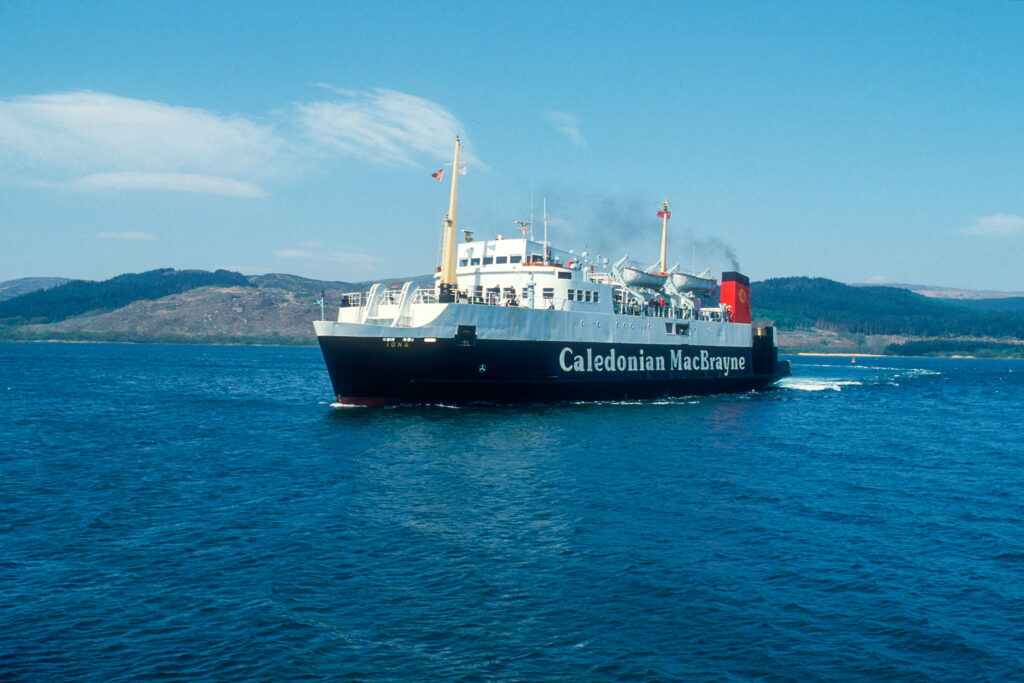
What itineraries are available through Absolute Escapes?
Absolute Escapes offers various itineraries for whisky buffs and island hoppers, such as Islay & The West Coast Whisky Tour and Islands of Arran, Islay, Mull & Skye. However, we can customise any of our self-driving tours, and if Islay is on your bucket list, we would be delighted to incorporate it into your unique Scottish adventure.
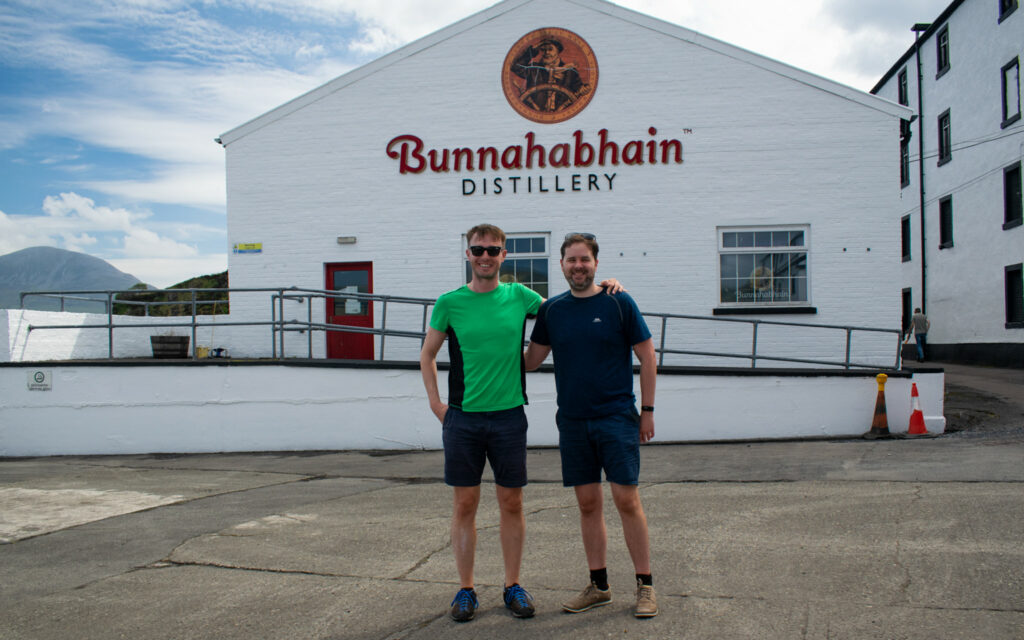
For example, you could start off in Edinburgh and get a well-rounded introduction to the whisky world in Scotland by visiting the Scotch Whisky Experience and the unique Port of Leith Distillery. Then, travel onwards to Loch Lomond & the Trossachs National Park (perhaps stopping at Loch Lomond Distillery en-route) before heading to Oban, known as the ‘Gateway to the Isles’. While you are here, why not visit Oban Distillery? Then travel south along the Kintyre Peninsula for a 4-day trip to Islay. On the way back, finish in Glasgow, and pop along to Clydeside Distillery for one last dram.
The options are endless so get in touch today and our expert team will be happy to help you plan a bespoke whisky experience.
Katia Fernandez Mayo

